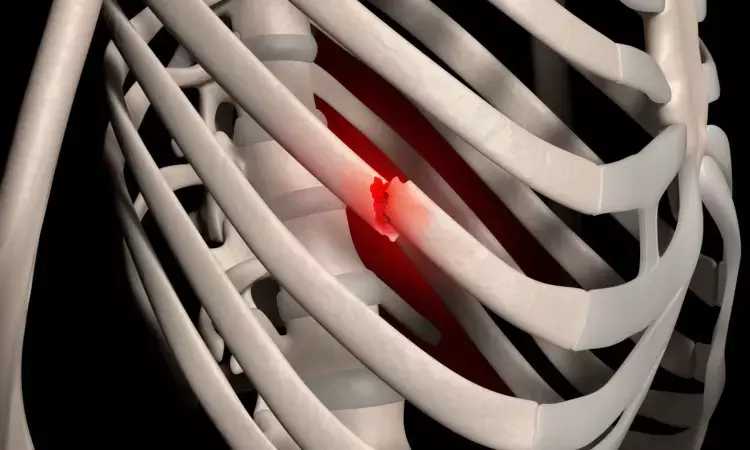- Home
- Medical news & Guidelines
- Anesthesiology
- Cardiology and CTVS
- Critical Care
- Dentistry
- Dermatology
- Diabetes and Endocrinology
- ENT
- Gastroenterology
- Medicine
- Nephrology
- Neurology
- Obstretics-Gynaecology
- Oncology
- Ophthalmology
- Orthopaedics
- Pediatrics-Neonatology
- Psychiatry
- Pulmonology
- Radiology
- Surgery
- Urology
- Laboratory Medicine
- Diet
- Nursing
- Paramedical
- Physiotherapy
- Health news
- Fact Check
- Bone Health Fact Check
- Brain Health Fact Check
- Cancer Related Fact Check
- Child Care Fact Check
- Dental and oral health fact check
- Diabetes and metabolic health fact check
- Diet and Nutrition Fact Check
- Eye and ENT Care Fact Check
- Fitness fact check
- Gut health fact check
- Heart health fact check
- Kidney health fact check
- Medical education fact check
- Men's health fact check
- Respiratory fact check
- Skin and hair care fact check
- Vaccine and Immunization fact check
- Women's health fact check
- AYUSH
- State News
- Andaman and Nicobar Islands
- Andhra Pradesh
- Arunachal Pradesh
- Assam
- Bihar
- Chandigarh
- Chattisgarh
- Dadra and Nagar Haveli
- Daman and Diu
- Delhi
- Goa
- Gujarat
- Haryana
- Himachal Pradesh
- Jammu & Kashmir
- Jharkhand
- Karnataka
- Kerala
- Ladakh
- Lakshadweep
- Madhya Pradesh
- Maharashtra
- Manipur
- Meghalaya
- Mizoram
- Nagaland
- Odisha
- Puducherry
- Punjab
- Rajasthan
- Sikkim
- Tamil Nadu
- Telangana
- Tripura
- Uttar Pradesh
- Uttrakhand
- West Bengal
- Medical Education
- Industry
Freezing Pain Away after rib fracture: Cryoneurolysis for Lasting Relief, suggests study

Recent study focused on comparing the effectiveness of ultrasound-guided percutaneous cryoneurolysis to intercostal nerve blocks in managing pain, reducing opioid consumption, and improving pulmonary function in patients with traumatic rib fractures. The hypothesis was that cryoneurolysis would improve analgesia and inspire volume after rib fracture compared to the control treatment.
A randomized controlled trial with 20 participants evaluated the outcomes. Cryoneurolysis significantly improved maximum inspired lung volume and reduced pain immediately post-treatment and continued to do so throughout the first month compared to the control group. The cryoneurolysis group showed a 100% to 188% improvement in inspired volume compared to 30% improvement in the control group. Pain scores were consistently lower in the cryoneurolysis group, and total cumulative oxycodone equivalents were significantly lower in this group.
Pain Reduction and Outcomes
The study found that cryoneurolysis reduced pain interference, decreased opioid consumption by 89%, and lowered the frequency of awakenings due to pain. Cryoneurolysis patients reported no pain after one month post-treatment compared to the control group, where some participants still experienced pain. The study did not identify any systemic side effects or complications related to cryoneurolysis.
Limitations and Conclusion
The limitations of the study include a small sample size and the need for further research to confirm the findings in a larger trial. Cryoneurolysis was shown to have long-lasting effects, avoiding systemic side effects of opioids, and reducing the burden on patients and healthcare providers. Cryoneurolysis is a potential alternative for managing pain after traumatic rib fractures, offering prolonged pain relief without the risks associated with traditional treatments.
Overall Study Evaluation
Overall, the study suggests that cryoneurolysis is a promising intervention for improving pain management, reducing opioid use, and enhancing pulmonary function in patients with rib fractures. However, further research with a larger sample size is necessary to validate these preliminary findings and determine the long-term benefits and potential risks associated with cryoneurolysis.
Key Points
- The study compared ultrasound-guided percutaneous cryoneurolysis to intercostal nerve blocks for managing pain, reducing opioid consumption, and improving pulmonary function in patients with traumatic rib fractures.
- Cryoneurolysis significantly improved maximum inspired lung volume, reduced pain immediately post-treatment, and continued to do so throughout the first month compared to the control group.
- Cryoneurolysis group showed a 100% to 188% improvement in inspired volume compared to a 30% improvement in the control group.
- Cryoneurolysis reduced pain interference, decreased opioid consumption by 89%, and lowered the frequency of awakenings due to pain, with some patients reporting no pain one month post-treatment.
- No systemic side effects or complications related to cryoneurolysis were identified during the study.
- Cryoneurolysis is a promising intervention that offers prolonged pain relief without the risks associated with traditional treatments, but further research with a larger sample size is needed to confirm these findings and understand the long-term benefits and potential risks.
Reference –
J. Finneran et al. (2024). Ultrasound-Guided Percutaneous Cryoneurolysis For The Treatment Of Pain After Traumatic Rib Fracture: A Randomized, Active-Controlled, Participant- And Observer-Masked Study. *Anesthesiology*, 142, 532 - 545. https://doi.org/10.1097/aln.0000000000005328.
MBBS, MD (Anaesthesiology), FNB (Cardiac Anaesthesiology)
Dr Monish Raut is a practicing Cardiac Anesthesiologist. He completed his MBBS at Government Medical College, Nagpur, and pursued his MD in Anesthesiology at BJ Medical College, Pune. Further specializing in Cardiac Anesthesiology, Dr Raut earned his FNB in Cardiac Anesthesiology from Sir Ganga Ram Hospital, Delhi.
Dr Kamal Kant Kohli-MBBS, DTCD- a chest specialist with more than 30 years of practice and a flair for writing clinical articles, Dr Kamal Kant Kohli joined Medical Dialogues as a Chief Editor of Medical News. Besides writing articles, as an editor, he proofreads and verifies all the medical content published on Medical Dialogues including those coming from journals, studies,medical conferences,guidelines etc. Email: drkohli@medicaldialogues.in. Contact no. 011-43720751


